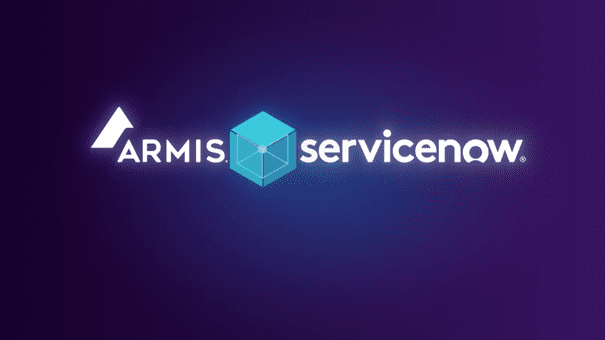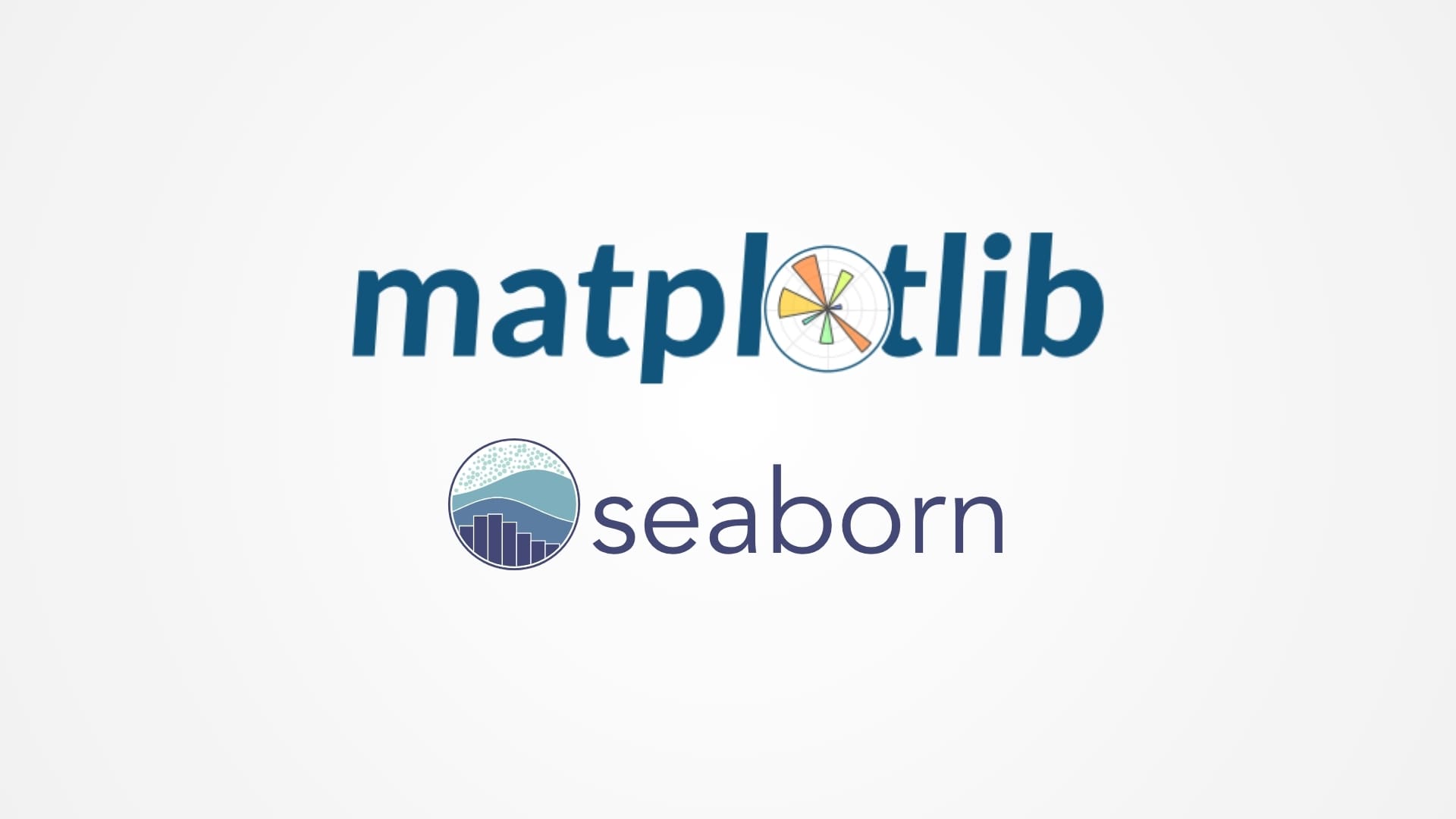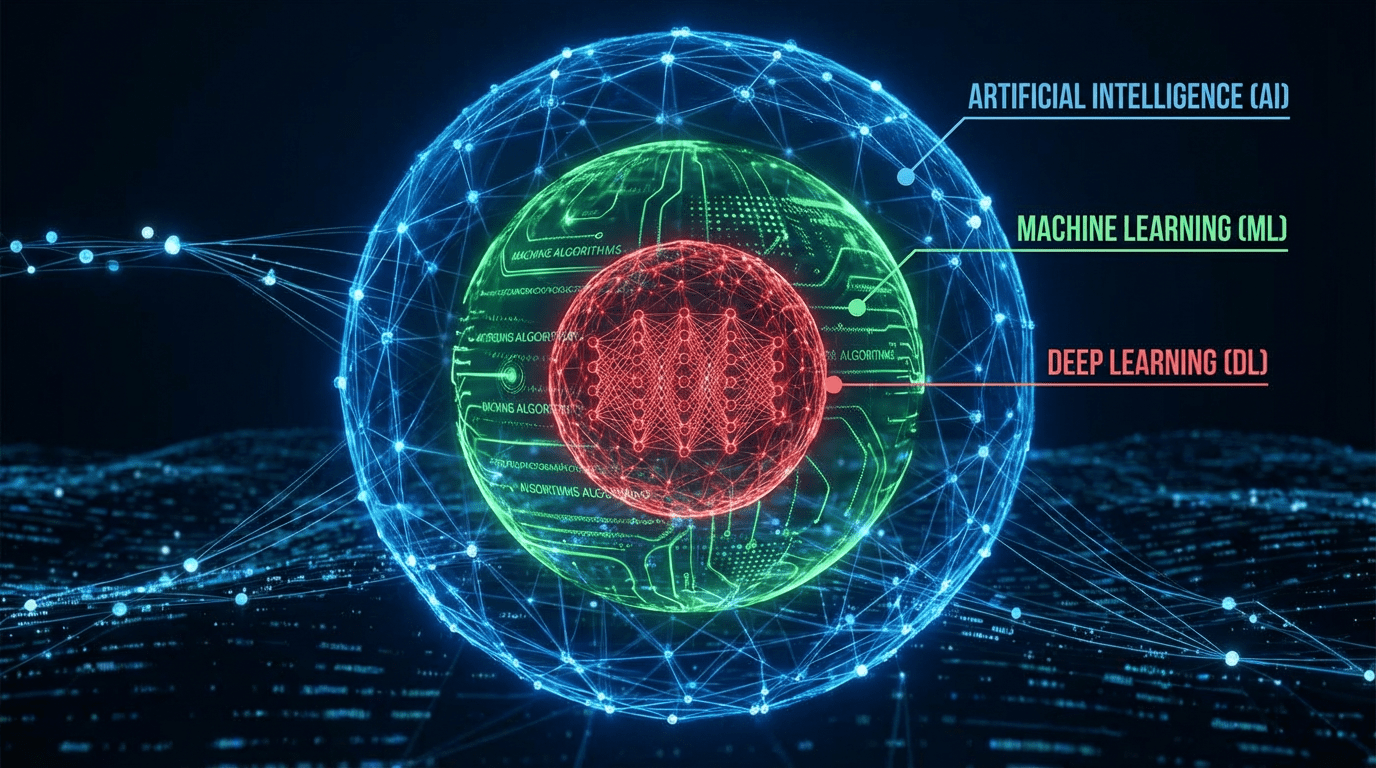Instance-based learning is a type of machine learning approach where the model makes predictions based on specific instances from the training data, rather than by generalizing patterns across the entire dataset. Unlike models that learn a general set of rules or parameters, instance-based learning relies on memorizing the instances and uses them to make predictions when new data arrives. Also known as memory-based learning or lazy learning, instance-based learning is often used in classification tasks and other applications where a model needs to respond to new data by comparing it directly to examples in the dataset.
At the core of instance-based learning are similarity measures, which determine how closely new data points resemble stored instances. For instance-based algorithms, the most relevant instances from the training data are used to predict the output for a new data point based on similarity. Common instance-based algorithms include k-nearest neighbors (KNN), locally weighted regression, and case-based reasoning.
This article explores the foundational concepts, advantages, and limitations of instance-based learning. We will also examine how it differs from other learning approaches, such as model-based learning, and discuss its most popular algorithms and practical applications.
Key Concepts in Instance-Based Learning
To understand instance-based learning, it is essential to explore several foundational concepts that define how this approach works, including its reliance on instance memorization, similarity measures, and lazy learning.
1. Instance Memorization
In instance-based learning, the model memorizes each instance from the training data, storing it in its raw form. When a new input is provided, the model does not apply predefined rules or patterns; instead, it compares the new instance with stored instances to identify the closest match. This method is why instance-based learning is also called memory-based learning, as the model essentially “remembers” previous data points and uses them directly to make predictions.
- Example: In a KNN classification model for identifying flowers based on petal length and width, the model would store all labeled flower instances. When a new flower’s petal dimensions are given, the model compares these dimensions with all stored flowers, finding the closest match to determine the likely species.
2. Similarity Measures
Similarity measures are at the heart of instance-based learning, as they determine how closely a new instance matches stored data. In most cases, instance-based learning algorithms calculate similarity using distance metrics like Euclidean distance, Manhattan distance, or Cosine similarity. The choice of similarity measure affects the model’s accuracy and effectiveness, as different metrics suit different types of data and tasks.
- Example: In a recommender system that suggests movies to users, the system could use cosine similarity to measure the similarity between a user’s movie-watching history and other users. By finding users with similar viewing habits, the model recommends movies that similar users have liked.
3. Lazy Learning
Instance-based learning is often called lazy learning because the model doesn’t build a general model during training; instead, it “waits” until it receives new data to make any computations. Unlike other learning approaches that create a generalizable model during training (e.g., linear regression), lazy learning postpones most computation until it encounters a new instance. This characteristic makes instance-based learning models more adaptable to new data but also means they can be slower in making predictions, as they require more computational power during the prediction phase.
- Example: In a customer support system using case-based reasoning, the system doesn’t process or generalize knowledge until it receives a new customer inquiry. When a query arrives, it searches its case database for similar past cases to provide an answer.
Advantages of Instance-Based Learning
Instance-based learning offers several distinct advantages, making it a suitable choice for tasks that require adaptability and don’t need extensive generalization. Here are some key benefits:
1. Adaptability to New Data
Because instance-based learning doesn’t rely on pre-learned parameters or rules, it is highly adaptable to new data points. When a new instance is added to the dataset, it can immediately be used for predictions without requiring the model to be retrained, as each instance functions as a standalone point of reference.
- Example: In fraud detection, where patterns of fraud constantly change, an instance-based model can incorporate each new case immediately, using it to improve predictions on future cases.
2. Intuitive and Explainable Predictions
Instance-based learning provides straightforward explanations for its predictions, as it bases them directly on comparisons with stored instances. This makes it easier for users to understand how and why the model arrived at a particular prediction, which is especially valuable in fields that prioritize interpretability, such as healthcare and finance.
- Example: In medical diagnosis, if a model predicts a disease based on similarities to past patient records, doctors can review those similar cases to understand the rationale behind the prediction.
3. No Need for Extensive Training Time
Unlike model-based approaches that often require extensive training times to optimize parameters, instance-based learning models can be set up quickly. This lack of a separate training phase makes instance-based learning well-suited for scenarios where rapid deployment is needed, or where the dataset is continuously updated.
- Example: In an e-commerce recommendation system, where new products are regularly added, an instance-based model can start using the new data immediately without retraining, allowing recommendations to stay up-to-date with the latest trends.
4. Robustness to Data Diversity
Instance-based learning models can handle diverse datasets well, as they make predictions based on local patterns rather than a single global model. This capability allows them to provide accurate predictions in scenarios where data may be irregular or contain different subgroups.
- Example: In handwriting recognition, an instance-based learning model can recognize characters by comparing each new sample with stored examples of various writing styles, adapting to different handwriting variations.
These advantages make instance-based learning highly useful in applications where quick adaptability, interpretability, and minimal training requirements are essential.
Limitations of Instance-Based Learning
Despite its strengths, instance-based learning also has certain limitations that may make it less suitable for specific tasks. Here are some key limitations:
1. High Memory and Computational Costs
Instance-based learning requires the storage of all training instances, which can lead to significant memory consumption, especially for large datasets. Additionally, since predictions rely on comparisons with each stored instance, the computational cost increases as the dataset grows, potentially leading to slower response times.
- Example: In a real-time facial recognition system, an instance-based model might struggle with large databases of faces, as comparing each new face against the entire dataset can be time-consuming and memory-intensive.
2. Sensitivity to Irrelevant Features
Instance-based learning models are highly sensitive to feature selection. If the dataset includes irrelevant features, they can distort similarity calculations and lead to inaccurate predictions. Proper feature selection or preprocessing is essential to mitigate this issue.
- Example: In a movie recommendation system, if irrelevant features like movie release dates are included, they could reduce the model’s accuracy by creating misleading similarity scores between movies.
3. Lack of Generalization
Unlike model-based learning, instance-based learning does not create a generalized model, which can make it less effective for tasks requiring high-level pattern recognition. Since predictions rely on local instance similarities, the model may fail to recognize broader trends in the data.
- Example: In economic forecasting, where large-scale trends are essential, an instance-based model might underperform compared to a model that can learn and apply broader economic patterns.
4. Performance Decline with Increasing Data
As the dataset grows, the performance of instance-based learning models can decline due to the computational demands of comparing each new data point with every stored instance. This limitation makes it challenging to scale instance-based models for very large datasets.
- Example: In a spam detection system, the model might slow down significantly as the volume of emails grows, as it has to compare each new email with a large repository of past emails.
While these limitations can impact instance-based learning models, they remain highly effective for tasks that require adaptability, interpretability, and low initial setup time. By addressing memory and computational challenges, instance-based learning can still provide valuable solutions in data-rich environments.
Comparison with Model-Based Learning
Instance-based learning is often contrasted with model-based learning, which creates a general model from the data, using it to make predictions based on learned patterns rather than specific instances. Here’s a quick comparison of these two approaches:
- Instance-Based Learning: Stores and uses individual instances for predictions, has no separate training phase, is highly interpretable, and is ideal for tasks with local patterns or where data evolves frequently.
- Model-Based Learning: Uses a generalized model derived from the dataset, requires a training phase, and is suited for tasks needing high-level pattern recognition or scalability with large datasets.
For example, in fraud detection, an instance-based model can quickly adapt to new fraud cases, while a model-based approach might provide more comprehensive insights by recognizing broader fraud patterns in the data.
Popular Algorithms in Instance-Based Learning
Instance-based learning relies on specific algorithms that utilize similarity measures to make predictions. Here are some of the most popular algorithms used in instance-based learning, along with their key features and applications.
1. k-Nearest Neighbors (KNN)
k-Nearest Neighbors (KNN) is one of the most widely used instance-based learning algorithms. In KNN, the model makes predictions by identifying the kkk most similar instances (neighbors) to a new data point. The similarity is typically measured using distance metrics like Euclidean distance, Manhattan distance, or cosine similarity. KNN is highly intuitive, easy to implement, and works well for both classification and regression tasks.
- Example: In a medical diagnosis system, KNN can predict a disease for a new patient by analyzing the medical records of the kkk most similar patients and taking a majority vote of their diagnoses.
2. Locally Weighted Regression (LWR)
Locally Weighted Regression (LWR) is an instance-based algorithm used for regression tasks. Unlike traditional regression, LWR fits a separate linear model for each prediction, weighing nearby data points more heavily than distant ones. This local approach allows LWR to capture complex, non-linear relationships in the data by focusing on smaller regions of the dataset for each prediction.
- Example: In housing price prediction, LWR could predict the price of a new property by fitting a local regression model based on nearby properties, allowing it to account for neighborhood-specific factors.
3. Case-Based Reasoning (CBR)
Case-Based Reasoning (CBR) is an instance-based approach that solves new problems by drawing on previous, similar cases. In CBR, each stored instance represents a “case,” and the model makes predictions by identifying cases that resemble the current input. CBR is particularly effective in applications where specific examples are more valuable than generalized patterns, such as customer support or legal case analysis.
- Example: In a customer support system, CBR could suggest solutions for a technical issue by searching for similar cases in past support tickets, providing solutions based on what worked previously.
4. Radial Basis Function Networks (RBFNs)
Radial Basis Function Networks (RBFNs) are a type of neural network that uses instance-based learning principles. In an RBFN, the model computes the distance between a new instance and a set of “centers” or representative instances. Each center activates a radial basis function (typically Gaussian), and the model combines these functions to make predictions. RBFNs are effective for classification and function approximation tasks, particularly when the data has a non-linear structure.
- Example: In image recognition, an RBFN can classify new images by comparing them to representative images stored as centers, allowing it to capture complex visual features.
These algorithms each have unique strengths and are suitable for different types of tasks, from simple classification with KNN to more complex problem-solving with CBR. Choosing the right algorithm depends on the specific requirements of the task, including the type of data and desired accuracy.
Step-by-Step Guide to Implementing an Instance-Based Model
Building an instance-based learning model involves several key steps, from data preparation to model selection, training, and evaluation. Here’s a guide to help you implement an effective instance-based model.
Step 1: Data Collection and Preprocessing
The quality of an instance-based learning model depends heavily on the quality and relevance of the training instances. Therefore, it’s essential to collect a comprehensive dataset that captures the range of scenarios the model will encounter. Data preprocessing is also critical, as irrelevant features or inconsistencies can distort similarity measures.
- Data Cleaning: Remove any duplicates or inconsistencies, handle missing values, and filter out noise to ensure data accuracy.
- Feature Selection: Since instance-based learning models rely heavily on feature similarity, selecting the most relevant features is essential. Consider using techniques like feature scaling (e.g., normalization or standardization) to ensure all features contribute equally to the similarity calculations.
from sklearn.preprocessing import StandardScaler
# Example of scaling features for KNN
scaler = StandardScaler()
X_scaled = scaler.fit_transform(X)Step 2: Choosing the Similarity Measure
The choice of similarity measure depends on the nature of the data and the algorithm. For numeric data, Euclidean or Manhattan distance may be appropriate, while for text or high-dimensional data, cosine similarity might perform better.
- Example: In a movie recommendation system, cosine similarity can capture similarities between users’ viewing histories by measuring the angle between their feature vectors, making it effective for sparse data.
Step 3: Selecting the Algorithm
Select an algorithm based on the specific requirements of the task. For simple classification tasks, KNN is a good choice due to its straightforward implementation. For tasks involving continuous predictions, such as regression, locally weighted regression may be more appropriate.
- Example: In a product recommendation model, KNN could be used to suggest items based on similar customers’ purchase histories.
Step 4: Setting the Parameters
Instance-based models, especially KNN, require careful parameter tuning to achieve optimal results. Key parameters include the number of neighbors kkk in KNN, the bandwidth for weighting in LWR, or the similarity threshold in CBR.
- Example: In a KNN model, use cross-validation to determine the best value for kkk. A smaller kkk may capture local patterns but be sensitive to noise, while a larger kkk provides stability at the cost of capturing finer details.
from sklearn.model_selection import cross_val_score
from sklearn.neighbors import KNeighborsClassifier
# Example of tuning k in KNN with cross-validation
for k in range(1, 10):
knn = KNeighborsClassifier(n_neighbors=k)
scores = cross_val_score(knn, X_scaled, y, cv=5)
print(f"Average Accuracy for k={k}: {scores.mean()}")Step 5: Model Evaluation
Evaluate the model on a test dataset to measure its performance. Common metrics include accuracy for classification tasks, mean squared error (MSE) for regression, and F1-score for imbalanced datasets. Since instance-based models are sensitive to noise, it’s essential to monitor these metrics closely.
- Example: For a customer segmentation model, evaluate the accuracy of customer classifications on a test dataset to ensure that the similarity measure and feature selection were effective.
Step 6: Deploying and Updating the Model
Once evaluated, deploy the model for use in production. Since instance-based learning is highly adaptable, new data instances can be added directly to the dataset without retraining the model, enabling continuous updates. However, regular data maintenance, such as removing outdated instances, is recommended to maintain performance.
- Example: In a recommendation system, update the instance database periodically to reflect new products and remove discontinued items, ensuring the recommendations stay relevant.
By following these steps, practitioners can implement effective instance-based learning models that provide accurate predictions based on local patterns and adapt quickly to new data.
Practical Considerations for Optimizing Instance-Based Learning
While instance-based learning models are flexible and straightforward to deploy, several practical considerations can help ensure they operate efficiently and accurately.
1. Memory Management
Since instance-based models store every training instance, memory usage can quickly become a bottleneck, especially with large datasets. Techniques like instance pruning or compression can help manage memory requirements by retaining only the most relevant instances.
- Best Practice: Use instance selection techniques to retain only the most informative or diverse instances, reducing the dataset size while maintaining prediction accuracy. Clustering similar instances before adding them to the model can also improve memory efficiency.
2. Computational Efficiency
Instance-based learning models can become computationally intensive, as each new prediction requires comparisons with all stored instances. This limitation can slow down predictions as the dataset grows.
- Best Practice: Implement approximate nearest neighbor (ANN) techniques or use data structures like k-d trees to speed up similarity searches in large datasets. ANN methods approximate the nearest neighbors, providing faster predictions with minimal loss in accuracy.
3. Handling Noisy Data
Instance-based models are sensitive to noise, as noisy instances can distort similarity calculations. Applying noise filtering or smoothing techniques can help improve model accuracy by reducing the impact of outliers.
- Best Practice: Use preprocessing techniques to filter out noisy data points before training. Additionally, consider setting a similarity threshold that filters out instances with low similarity scores, which can help reduce the influence of outliers.
4. Feature Scaling and Selection
Features must be carefully scaled and selected to ensure meaningful similarity calculations. Irrelevant or unscaled features can distort distance measurements, leading to inaccurate predictions.
- Best Practice: Apply feature scaling techniques and use dimensionality reduction methods like Principal Component Analysis (PCA) to remove redundant features, ensuring that only the most relevant features contribute to similarity measures.
5. Adaptation to Evolving Data
While instance-based learning is adaptable, continuously updating the model with new instances can lead to performance issues if outdated data accumulates. Implementing periodic updates, where outdated instances are removed, can help maintain model relevance.
- Best Practice: Regularly review and prune the instance database to remove outdated or less relevant examples. This helps prevent the model from becoming overburdened with data that no longer represents current patterns.
By addressing these considerations, instance-based learning models can operate efficiently, maintain high accuracy, and provide reliable predictions, even as datasets grow and evolve.
Real-World Applications of Instance-Based Learning
Instance-based learning has found practical applications in various fields where adaptability, interpretability, and reliance on local patterns are crucial. Here are some notable applications across different industries.
1. Medical Diagnosis and Healthcare
In healthcare, instance-based learning is used to support diagnostic decisions by referencing historical patient records and identifying cases similar to new patients. This approach allows healthcare providers to gain insights from similar cases and make more informed decisions.
- Example: In disease diagnosis, KNN or case-based reasoning (CBR) models are used to predict a patient’s condition by comparing symptoms and test results with past cases. These models help doctors identify conditions based on patterns seen in similar patients.
2. Fraud Detection in Financial Services
Financial institutions use instance-based learning to detect fraudulent activities by comparing each new transaction with a set of previously observed transactions. Since fraudulent patterns evolve rapidly, instance-based models allow for quick adaptation, enhancing security.
- Example: A bank may use a KNN model to flag suspicious credit card transactions by comparing them to past fraudulent transactions, detecting anomalies based on similarity and alerting analysts to potential fraud cases.
3. Personalized Recommendations in E-Commerce
Instance-based learning models are highly effective for recommendation systems in e-commerce, where the goal is to suggest products that are most relevant to each user. By identifying customers with similar purchasing patterns, these models can tailor recommendations to each user’s preferences.
- Example: In an online retail platform, a KNN-based recommendation system suggests products to a customer by identifying other customers with similar buying habits, enabling highly personalized product recommendations.
4. Image and Pattern Recognition
Instance-based learning is widely used in image classification and pattern recognition, where the model identifies objects or patterns by comparing them to stored examples. This application is common in fields like facial recognition, handwriting analysis, and medical imaging.
- Example: In facial recognition, an RBF network or KNN model matches a person’s face to stored images by calculating the similarity between facial features, allowing for accurate identification in security systems.
5. Customer Support and Case-Based Reasoning
In customer service, instance-based learning is applied to case-based reasoning systems to provide solutions based on previously resolved cases. This approach allows customer support agents to handle issues more efficiently by drawing on past experiences.
- Example: A tech support system uses case-based reasoning to identify past solutions for similar customer issues. When a new query arrives, the model searches the case database for the most relevant past cases, recommending a solution based on similar instances.
These applications illustrate how instance-based learning leverages historical data to provide contextually relevant predictions, making it highly effective in areas requiring flexibility and real-time adaptability.
Future Trends in Instance-Based Learning
As technology advances, several trends are shaping the future of instance-based learning, enhancing its scalability, accuracy, and applicability across more complex tasks.
1. Combining Instance-Based Learning with Deep Learning
Integrating instance-based learning with deep learning models is an emerging trend that combines the strengths of both approaches. Deep learning models capture high-level patterns, while instance-based learning retains local information, providing context-sensitive predictions that are both generalizable and adaptable.
- Example: In image classification, a hybrid model might use a convolutional neural network (CNN) to extract features, with an instance-based layer (like KNN) to make final predictions based on specific features of the input image, improving both accuracy and interpretability.
2. Memory-Efficient Instance Selection Techniques
As instance-based learning faces scalability challenges with large datasets, memory-efficient techniques like instance pruning and clustering are being developed. These methods reduce storage needs by selecting representative instances, enabling models to handle larger datasets without sacrificing performance.
- Example: In document classification, clustering can reduce the number of stored instances by selecting representative documents, making instance-based models more memory-efficient and faster for real-time applications.
3. Use of Approximate Nearest Neighbor (ANN) Algorithms
Approximate nearest neighbor (ANN) algorithms speed up similarity searches by finding approximate, rather than exact, nearest neighbors. This method improves the scalability of instance-based learning models, allowing them to handle large-scale datasets more efficiently.
- Example: In recommendation systems, ANN techniques allow for quick retrieval of similar users or items in extensive databases, enhancing response times without compromising recommendation quality.
4. Real-Time Adaptability with Online Instance-Based Learning
Online instance-based learning is gaining traction, allowing models to incorporate new instances in real time. This capability enhances adaptability, making instance-based models suitable for applications where data changes frequently and models must adapt on-the-fly.
- Example: In social media monitoring, an online instance-based model adapts to new trends and hashtags as they emerge, enabling real-time sentiment analysis based on the latest social interactions.
5. Instance-Based Learning for Multimodal Data
Instance-based learning models are being extended to handle multimodal data—data that includes multiple types, such as text, images, and numerical information. By supporting multimodal data, instance-based learning can be applied in fields like multimedia search, where combining different data types enhances relevance.
- Example: In e-commerce search engines, a multimodal instance-based model could recommend products by considering both visual similarity (images) and textual similarity (descriptions), providing more accurate search results.
These trends demonstrate the potential of instance-based learning to become more adaptable, scalable, and suitable for diverse and complex datasets, expanding its applicability across modern AI-driven industries.
Best Practices for Optimizing Instance-Based Learning Models
To build and maintain effective instance-based learning models, it’s important to follow best practices that ensure scalability, accuracy, and efficiency, especially as data grows in volume and complexity.
1. Choose the Right Similarity Metric for the Data Type
The choice of similarity metric has a major impact on the performance of instance-based models. Selecting a metric that aligns with the data type and task requirements is essential for achieving accurate predictions.
- Best Practice: For continuous data, use Euclidean or Manhattan distance. For text or high-dimensional data, cosine similarity is more effective. Experiment with different metrics to find the most suitable option for your specific dataset.
2. Apply Feature Engineering and Scaling
Since instance-based models rely heavily on similarity calculations, feature scaling and selection are crucial for ensuring accurate distance measurements. Applying scaling techniques and removing irrelevant features improves model performance and prediction accuracy.
- Best Practice: Use techniques like normalization or standardization to ensure features are on a similar scale. Dimensionality reduction techniques, such as PCA, can also be applied to remove redundancy and focus on the most relevant features.
3. Use Instance Pruning and Compression for Scalability
To manage memory usage and enhance scalability, apply instance selection techniques like pruning or compression. These methods reduce the number of stored instances, making the model more memory-efficient without compromising accuracy.
- Best Practice: Retain only the most representative instances by clustering similar data points or applying instance pruning, particularly in large datasets where memory and computational resources are limited.
4. Implement Approximate Nearest Neighbor (ANN) Techniques
For applications requiring quick response times, approximate nearest neighbor (ANN) techniques can speed up similarity searches. By finding approximate neighbors rather than exact matches, ANN methods enable faster predictions, ideal for real-time systems.
- Best Practice: Use libraries like Faiss or Annoy to implement ANN searches in applications with large instance sets, where computational efficiency is a priority. This approach provides a balance between accuracy and speed.
5. Regularly Update the Instance Database
Instance-based learning models benefit from keeping their instance database updated with the latest data. However, outdated or irrelevant instances can reduce model accuracy. Regularly updating the database helps maintain relevance and improve predictive power.
- Best Practice: Periodically review and update the instance database by adding new instances and removing outdated ones. This is especially important for applications where data patterns evolve, such as customer preferences in recommendation systems.
6. Test Model Performance with Cross-Validation
Cross-validation is valuable for tuning parameters, such as the number of neighbors in KNN, and testing different similarity metrics. This process helps ensure the model’s robustness and improves its ability to generalize to new data points.
- Best Practice: Apply cross-validation techniques to evaluate the model’s performance under various configurations, identifying the most effective combination of parameters and similarity metrics.
By following these best practices, practitioners can build instance-based learning models that are accurate, scalable, and well-suited to real-world applications, even as data grows and changes.
The Significance of Instance-Based Learning
Instance-based learning is a powerful and flexible approach to machine learning, particularly useful for applications where adaptability, interpretability, and memory of specific instances are essential. Unlike model-based learning, which relies on generalized patterns, instance-based learning leverages stored instances directly, making predictions based on similarities to past cases.
Applications like medical diagnosis, fraud detection, personalized recommendations, and image recognition illustrate the versatility and effectiveness of instance-based learning. The approach allows models to adapt quickly to new data, provide clear explanations for predictions, and handle complex datasets with diverse patterns. However, as datasets grow, challenges in memory usage and computational efficiency highlight the need for instance pruning, approximate nearest neighbor techniques, and memory-efficient algorithms to maintain performance.
Emerging trends in instance-based learning, such as hybrid models with deep learning, memory-efficient selection techniques, and real-time adaptability through online learning, signal a promising future. These advancements will enable instance-based learning to handle larger datasets and more complex applications while maintaining its unique strengths.
By applying best practices—such as optimizing similarity metrics, applying feature scaling, and using ANN techniques—data scientists can build robust and reliable instance-based learning models that deliver high accuracy, scalability, and adaptability in real-world scenarios. As technology evolves, instance-based learning will continue to play a significant role in machine learning, enabling responsive, data-driven decision-making across diverse fields.








